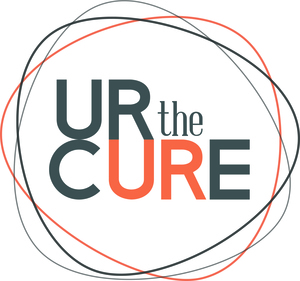Pamela's story
The Diagnosis
Pamela with her older brother Matt
In 2010, Pamela was diagnosed with a blood cancer at age 24. She endured several years of treatment including chemotherapy, radiation and a stem cell transplant using her own cells (Autologous Transplant). Unfortunately none of the treatment worked and she was given the option of having a Donor Stem Cell Transplant (commonly known as a bone marrow transplant) as a last chance for a cure. She needed the healthy stem cells of a matching donor to create a new immune system in her body to fight off and kill the cancer.
The Challenge
It was difficult to find Pamela a match because of her Lebanese background as there are not many people of Middle Eastern descent on the worldwide registry/database of potential donors (an important factor when trying to find a stem cell match).
Pamela and her family spent months waiting in despair. In a desperate attempt, Pamela's brother Matt formed a Facebook page to share with family and friends to spread the message amongst the Australian Middle Eastern community. They pleaded with people to join the bone marrow registry in the hope of being Pamela’s match.
It was this public plea for help on Facebook which caused the story to gain national and international media attention.
The Campaign
The Facebook page caught media attention who wanted to help raise awareness. This lead to Pamela’s story going public through newspapers, national TV stations, radio and international media. The support Pamela received from people all around the country was overwhelming. Many people followed the simple instructions that was asked of them; to call the Red Cross, take a blood test and ask to join the Australian Bone Marrow Registry to see if they were a match. Even if someone wasn't a match for Pamela, there were many other patients in the same shoes waiting for a match.
Due to the story, the Red Cross received four times the standard amount of calls on the day the story went to air. Well wishes, cards, prayers and more flowed in from people all around the country. It uplifted Pamela and her family and gave them the hope that they needed to get through this time.
Making a Difference
Pamela with the President of Lebanon, Michel Sleiman
The Match
Finally Pamela was lucky enough to have a “cord blood stem cell transplant” (unfortunately this is not always an option for everyone). A cord blood transplant works in a similar way as a bone marrow stem cell transplant, whereby a new immune system can be formed in the body to kill the cancer. It uses the stem cells found in a baby’s umbilical cord. The umbilical cord is normally discarded at birth, however a mother can ask to have her cord donated and added to the cord blood registry – with no harm or pain for the mother or baby.
As another twist to the story, Pamela and the family had the chance to meet the President of Lebanon during his official visit to Australia, where they discussed the need for a bone marrow registry in Lebanon. This resulted in Pamela flying to Lebanon with her mother for 4 days to raise awareness on the issue through various interviews and TV appearances.
There is now a team of experts commissioned by the Lebanese President currently creating Lebanon's first bone marrow registry, to save the lives of hundreds or thousands of people in the future.
One of many fantastic nurses preparing the cord blood stem cells at the Royal Melbourne Hospital
Remission
Pamela with her 3 brothers Andrew, James and Matt
So far the transplant has been a success and Pamela received the fantastic news that the cancer was in remission in December 2013. It was a long and hard journey but they were grateful for the support of the Leukaemia Foundation; for the accommodation nearby the hospital that they provided during the transplant which the family used for 4 months, and also for funding research to discover new treatments like the cord blood transplant that made Pamela cancer-free.
Ur the Cure to help others
The idea to establish Ur the Cure was created and based on replicating what happened with Pamela's search in the hope to help others in a similar situation who are struggling to find their match. Using the power of social media to spread the word and encourage people to join the bone marrow registry is the key to providing hope for many, so they too can find their life saving match. Begin by simply liking the Facebook page and find out how doing so could save a life!
Watch this short video: Journey from Pamela's story to Ur the Cure







